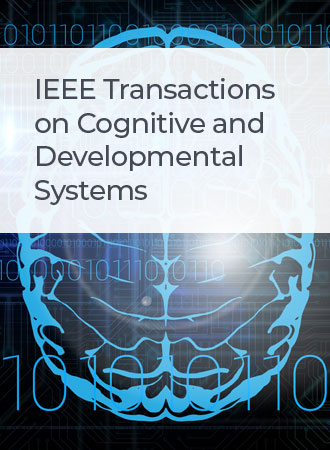基于脑电图的情感识别的功能连接模式学习
IF 4.9
3区 计算机科学
Q1 COMPUTER SCIENCE, ARTIFICIAL INTELLIGENCE
IEEE Transactions on Cognitive and Developmental Systems
Pub Date : 2024-09-30
DOI:10.1109/TCDS.2024.3470248
引用次数: 0
摘要
神经科学研究表明,不同的情绪与大脑区域不同的功能连接结构有关。然而,许多现有的基于脑电图(EEG)的情绪识别方法广泛地使用这些连接模式,而没有区分特定的情绪。此外,脑电图信号的非平稳性往往导致不同时期的变化很大,导致模型提取的是特定时间的特征,而不是情感特征。本文提出了一种基于脑电图的情感识别功能连接模式学习网络(FCPL)来解决这些挑战。FCPL包括一个系数分支、一个图构造模块和一个周期域对抗模块。这些组成部分分别捕捉个人特征和特定的情感连接模式,并减少与时期相关的变化。FCPL在MPED数据集上的7类受试者依赖/独立实验结果为42.04%/28.81%,SEED数据集上的受试者依赖/独立实验结果为97.45%/89.88%,而在做梦者数据集上的效价/唤醒受试者依赖实验结果为95.98%/96.19%,效价/唤醒受试者独立实验结果为67.90%/65.60%。这项工作推进了从粗粒度情绪相关模式到细粒度情绪区分的脑电图信号功能连接结构的探索,促进了神经科学和基于脑电图的情绪识别技术的发展。本文章由计算机程序翻译,如有差异,请以英文原文为准。
Functional Connectivity Patterns Learning for EEG-Based Emotion Recognition
Neuroscience research reveals that different emotions are associated with different functional connectivity structures of brain regions. However, many existing electroencephalography (EEG)-based emotion recognition methods use these connectivity patterns broadly without distinguishing between specific emotions. Additionally, the nonstationarity of EEG signals often results in high variations across different periods, leading models to extract time-specific features instead of emotional features. This article proposes a functional connectivity patterns learning network (FCPL) for EEG-based emotion recognition to address these challenges. FCPL includes a coefficient branch, a graph construction module, and a period domain adversarial module. These components capture individual characteristics and specific emotional connectivity patterns and reduce period-related variations, respectively. FCPL achieves state-of-the-art results: 42.04%/28.81% for seven-class subject-dependent/independent experiments on the MPED dataset, 97.45%/89.88% for subject-dependent/independent experiments on the SEED dataset, and 95.98%/96.19% for valence/arousal subject-dependent experiments and 67.90%/65.60% for valence/arousal subject-independent experiments on the DREAMER dataset. This work advances the exploration of functional connectivity structures in EEG signals from coarse-grained emotion-related patterns to fine-grained emotional distinctions, promoting neuroscience, and EEG-based emotion recognition technologies.
求助全文
通过发布文献求助,成功后即可免费获取论文全文。
去求助
来源期刊

IEEE Transactions on Cognitive and Developmental Systems
Computer Science-Software
CiteScore
7.20
自引率
10.00%
发文量
170
期刊介绍:
The IEEE Transactions on Cognitive and Developmental Systems (TCDS) focuses on advances in the study of development and cognition in natural (humans, animals) and artificial (robots, agents) systems. It welcomes contributions from multiple related disciplines including cognitive systems, cognitive robotics, developmental and epigenetic robotics, autonomous and evolutionary robotics, social structures, multi-agent and artificial life systems, computational neuroscience, and developmental psychology. Articles on theoretical, computational, application-oriented, and experimental studies as well as reviews in these areas are considered.
 求助内容:
求助内容: 应助结果提醒方式:
应助结果提醒方式:


